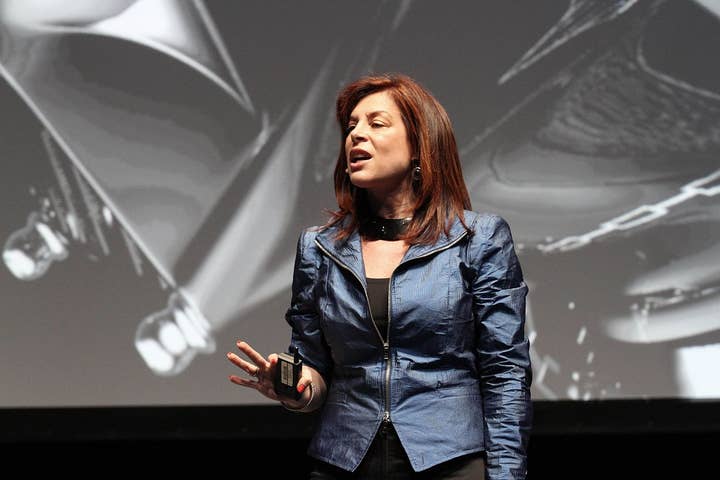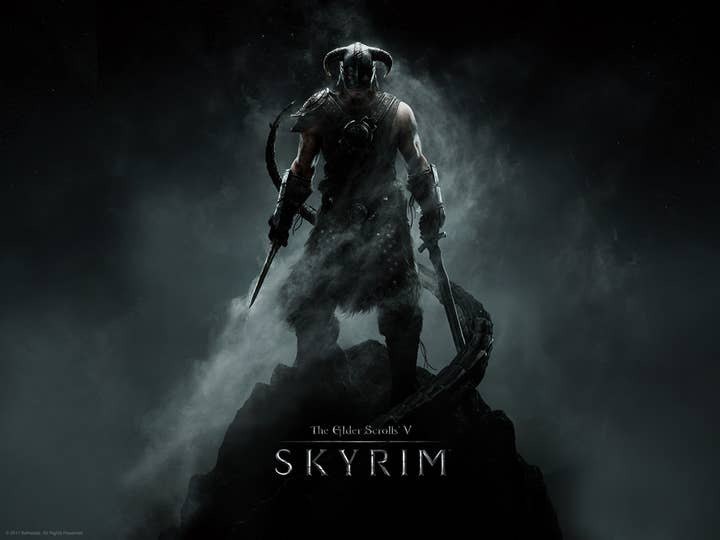Skyrim and Batman: Arkham City: Inside The Marketing
How Skyrim and Batman: Arkham City broke out of their niche markets
The Game Marketing Summit held in San Francisco on April 17 was a gathering of top marketers in the gaming industry to network, attend sessions, and hand out some awards for game marketing.
One of the top reasons to attend the summit is to learn the details of successful marketing campaigns, so two sessions that examined the marketing for Batman: Arkham City and The Elder Scrolls V: Skyrim were both very well attended. Despite the differences between the two games, the core goal of their marketing campaigns was the same: break out of a niche market and appeal to a broader audience of hardcore gamers.
The key to the Batman marketing campaign, as Russel Arons, Senior Vice President of Worldwide Marketing for Warner Bros. Interactive Entertainment made clear, was to make it a top-selling game, not just a top-selling superhero game. Arons made the point with some humor.
"Batman's greatest foes weren't The Joker, The Riddler, or Catwoman. They were Bobby Kotick, Yves Guillemot and John Riccitiello."
Russel Arons, SVP Worldwide Marketing, Warner Bros.
"Batman's greatest foes weren't The Joker, The Riddler, or Catwoman," said Arons. "They were Bobby Kotick, Yves Guillemot and John Riccitiello" - the CEOs, respectively, of Activision, Ubisoft, and Electronic Arts.
Driving her point home in a way that had the crowd laughing, Arons displayed a slide of Bobby Kotick Photoshopped into The Joker's body, Yves Guillemot as The Riddler, and John Riccitiello as Catwoman. "Looking good, there, John," Arons deadpanned.

Her point was that if they wanted to go big against big competition, they needed to broaden their audience to include gamers who weren't superhero fans. Warner's marketing team wanted to break out of their narrow genre and make Batman appeal to fans of Call of Duty. The team wrestled with this challenge, looking through the 70 years of Batman's career as a cultural icon. They concluded they couldn't get away from his identity as a superhero, but they needed to express the key elements in the character that would make him appeal to FPS and action gamers.
Brian Setzer of Trailer Park Video Games said their art director thought of the power of black & white photographs to capture iconic personalities like Steve Jobs or James Dean. The result was the image called The Wipe, which formed the basis for the visual campaign.
The black and white portrait, with blood, bathed in light, moved away from the classic superhero image to focus on the essential humanity of The Batman. The campaign appeared on 120 different magazine covers, 15 million targeted fans across a broad spectrum of social network pages hitting many different Warner Brothers properties. A viral campaign of videos created by different European units racked up a lot of impressions, with costumed actors "crashing" press events and appearing in the streets.
The three gameplay trailers got over 6 million views, and their Facebook page had almost 850,000 fans. Working with key retailers to provide exclusive DLC, Warner was able to increase pre-orders by over 200% over Batman: Arkham Asylum. The final result: Over 6 million units sold worldwide.

The Skyrim team also saw their basic mission as expanding the potential audience. They felt that Skyrim's weakness was being a single-player fantasy roleplaying game. First, all the best-selling games lately seem to be multiplayer games, so how could Skyrim compete with that? There was not way to get around the fact, so it had to become a strength for them.
Second, they worried that fantasy might be seen as too strange or weird for Call of Duty players. Pete Hines, VP of PR and Marketing for Bethesda Softworks, noted that they decided to focus on the aspects of the character that were independent of the genre, his heroic nature and the gritty, realistic tone underlying the story. The game really had a modern, cinematic take on fantasy, and that's what they felt the marketing campaign had to transmit to the consumers.
ED Davis, the account lead at AKQA, the agency that handled Skyrim, noted five keys to making their marketing effective. The first was relationships: Working closely between publisher, developer, and marketer; trying to foster close working relationships, and getting to know everyone gave the marketing campaign more depth and made it easier to take risks. Next was positioning: Determining that the game was going to be gritty and cinematic was important, and kept them away from trying to list features or tell a story. The story is in the game; all they needed to do was transmit a mood.
After that, craftsmanship was critical: The attention to every last detail made the impact of the marketing much greater. Even seemingly little things like the logo of the dragon took months of painstaking effort to make it just so; this was a level of detail that was in the game itself, so they felt the marketing needed to be just as painstaking in its detail work.

The commitment of the marketing was the fourth key element. Every component contributed to the brand. This meant not just using the same image everywhere. The marketing was considered to be part of the game experience for the players, which is why they got obsessive about the details. Finally, the last key element was restraint: They had a big landscape, there are lots of devices, channels, and formats, and the usual response of marketing is to fill everything up, but they decided on restraint. This meant only three video assets were released in the first eleven months of marketing. Fans were begging for more, but it wasn't until the final month before release that more information was forthcoming.
The results were stellar, with Skyrim selling ten million units in one month worldwide, and becoming the number 2 grossing title for 2011.
Both Batman: Arkham City and The Elder Scrolls V: Skyrim spent a great deal of money on their marketing efforts. Neither company would mention a figure, but clearly the budgets in both cases were into eight figures. Outside agencies worked with marketing personnel in-house for well over a year in both cases, producing a wide range of advertising, marketing pieces, artwork, video, DLC, print pieces, billboards, and events.
In both cases the teams felt that their games could sell well beyond the potential of games in their respective niches, and that an extraordinary marketing effort was necessary to make that happen. The level of success achieved in both cases shows what can be done when you combine a great game with excellent marketing.









